Ricardocedillob - Sin Título
More Posts from Ricardocedillob and Others




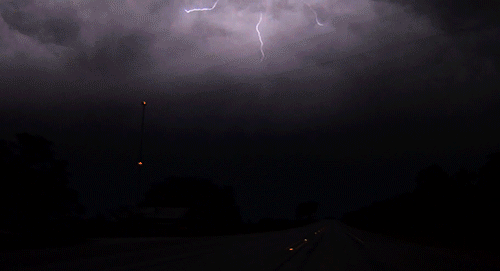




Lightning Appreciation Post:
There are nearly 500 lightning strikes every second around the world.
Only about 100 of these strike the earth, the others are between and within the clouds themselves.
Lightning is very visible from space (last gif from Astronaut Reid Wiseman)
Besides regular storms (thunder storms, hurricanes, etc.) lightning can be found in volcanoes (gif 3) and even intense forest fires.
In conclusion: nature is fucking awesome!
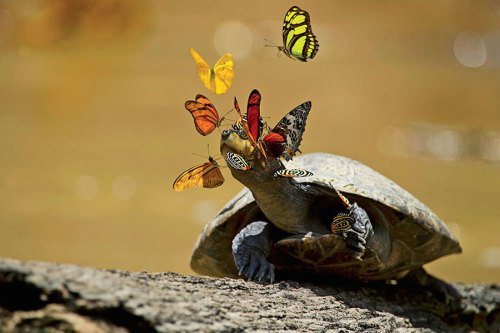
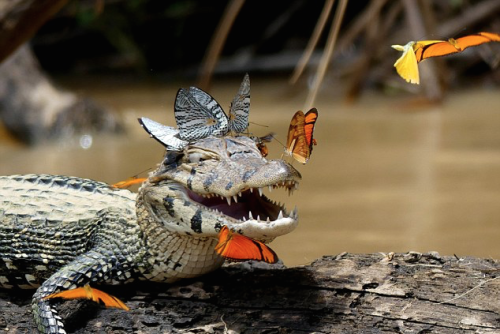
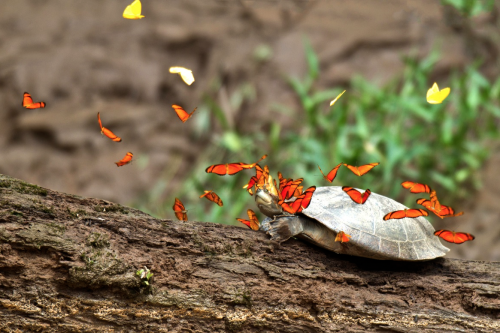

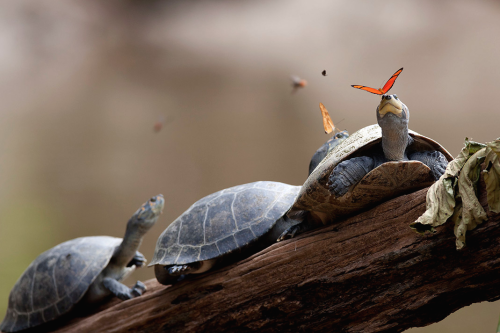
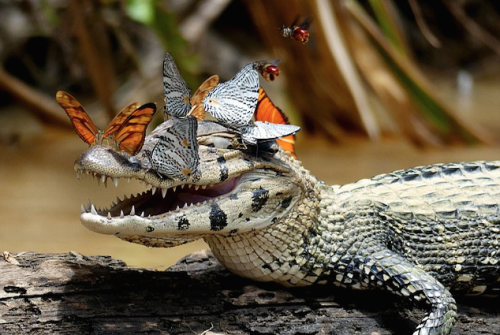
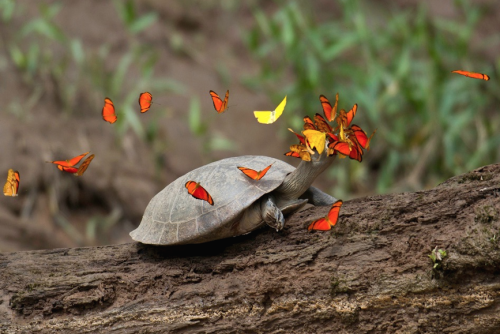

lachryphagy is the term used to describe the behaviour of tear drinking in nature, typically in environments - like the purvian amazon shown here - where sodium and other micronutrients are hard to find.
bees and butterflies need sodium for egg production and metabolic purposes, but their diets of nectar are low in salt. so the orange julia and sulfur yellow butterflies you see here turn to the salty tears of often stationary turtles and caiman.
and though the caiman and turtles seem to receive no reciprocal benefit from the interaction, they’re apparently happy enough to just help out. (x, x, x, x, x, x)

js
OMFG
Ha pasado de pinchar en las rave de valencia a tocar directos con la guitarra
Are colour-changing octopuses really colourblind?
Cephalopods, including octopuses and squid, have some of the most incredible colour-changing abilities in nature.
They can almost instantly blend in with their surroundings to evade predators or lay in wait, and put on colourful displays to attract mates or dazzle potential prey.
This is impressive enough on its own, but becomes even more amazing when you discover these creatures are in fact colourblind – they only have one type of light receptor in their eyes, meaning they can only see in black and white.
So how do they know what colours to change to at all?
This has puzzled biologists for decades but a father/son team of scientists from the University of California, Berkeley, and Harvard University think the unusual shape of their pupils holds the key, and they can see colour after all.
Cephalopods have wide U-shaped or dumbbell-shaped pupils, which allow light into the lens from many directions.

When light enters the pupils in human eyes it gets focused on one spot, cutting down on blur from the light being split into its constituent colours.
The scientists believe cephalopod eyes work the opposite way – the wide pupils split the light up and then individual colours can be focused on the retina by changing the depth of the eyeball and moving the pupil around.
The price for this is blurry vision, but it does mean they could make out colours in a unique way to any other animals.
Processing colour this way is more computationally intensive than other types of colour vision and likely requires a lot of brainpower, which might explain in part why cephalopods are the most intelligent invertebrates on Earth.

Read the paper
Images: Roy Caldwell, Klaus Stiefel, Alexander Stubbs
Los círculos no se mueven del sitio



Cave of the Crystals or Giant Crystal Cave is a cave connected to the Naica Mine at a depth of 300 metres (980 ft), in Naica, Chihuahua, Mexico... (Wikipedia)
-
 fendetestas45 liked this · 2 months ago
fendetestas45 liked this · 2 months ago -
 tea-cryptid liked this · 4 months ago
tea-cryptid liked this · 4 months ago -
 jamalexlee reblogged this · 4 months ago
jamalexlee reblogged this · 4 months ago -
 nerdtag1 liked this · 5 months ago
nerdtag1 liked this · 5 months ago -
 phllps88 liked this · 9 months ago
phllps88 liked this · 9 months ago -
 fatrucksstuff reblogged this · 9 months ago
fatrucksstuff reblogged this · 9 months ago -
 herbananapersonafriend liked this · 11 months ago
herbananapersonafriend liked this · 11 months ago -
 sasalexme liked this · 1 year ago
sasalexme liked this · 1 year ago -
 easariel reblogged this · 1 year ago
easariel reblogged this · 1 year ago -
 thedarkmistress13 liked this · 1 year ago
thedarkmistress13 liked this · 1 year ago -
 nik-searcy-007 liked this · 1 year ago
nik-searcy-007 liked this · 1 year ago -
 survivalwoman reblogged this · 1 year ago
survivalwoman reblogged this · 1 year ago -
 shaunassomewhatnormal reblogged this · 1 year ago
shaunassomewhatnormal reblogged this · 1 year ago -
 somefuckerontheinternet reblogged this · 1 year ago
somefuckerontheinternet reblogged this · 1 year ago -
 easariel reblogged this · 1 year ago
easariel reblogged this · 1 year ago -
 meow-division reblogged this · 1 year ago
meow-division reblogged this · 1 year ago -
 spottdrossel reblogged this · 1 year ago
spottdrossel reblogged this · 1 year ago -
 boostarz liked this · 1 year ago
boostarz liked this · 1 year ago -
 osmankhtab93 liked this · 1 year ago
osmankhtab93 liked this · 1 year ago -
 cho-yongchul reblogged this · 1 year ago
cho-yongchul reblogged this · 1 year ago -
 cho-yongchul liked this · 1 year ago
cho-yongchul liked this · 1 year ago -
 love-for-comics-and-animals reblogged this · 1 year ago
love-for-comics-and-animals reblogged this · 1 year ago -
 callisto-mt reblogged this · 1 year ago
callisto-mt reblogged this · 1 year ago -
 panpow liked this · 1 year ago
panpow liked this · 1 year ago -
 selenastorm26 reblogged this · 1 year ago
selenastorm26 reblogged this · 1 year ago -
 moviegirlsincedisney liked this · 1 year ago
moviegirlsincedisney liked this · 1 year ago -
 justfollowthings liked this · 1 year ago
justfollowthings liked this · 1 year ago -
 schrodingers-anarchist reblogged this · 1 year ago
schrodingers-anarchist reblogged this · 1 year ago -
 schrodingers-anarchist liked this · 1 year ago
schrodingers-anarchist liked this · 1 year ago -
 mimiceus liked this · 1 year ago
mimiceus liked this · 1 year ago -
 isisthesphinx reblogged this · 1 year ago
isisthesphinx reblogged this · 1 year ago -
 arcane-shadow reblogged this · 1 year ago
arcane-shadow reblogged this · 1 year ago -
 arcane-shadow liked this · 1 year ago
arcane-shadow liked this · 1 year ago -
 bee-las liked this · 1 year ago
bee-las liked this · 1 year ago -
 conglomerateme liked this · 1 year ago
conglomerateme liked this · 1 year ago -
 dendrocnide-moroides reblogged this · 1 year ago
dendrocnide-moroides reblogged this · 1 year ago -
 aithersattempts liked this · 1 year ago
aithersattempts liked this · 1 year ago -
 roadkill-bones reblogged this · 1 year ago
roadkill-bones reblogged this · 1 year ago -
 roadkill-bones liked this · 1 year ago
roadkill-bones liked this · 1 year ago -
 xenokattz liked this · 1 year ago
xenokattz liked this · 1 year ago -
 maura-labingi reblogged this · 1 year ago
maura-labingi reblogged this · 1 year ago -
 decadentbatbagelscissors reblogged this · 1 year ago
decadentbatbagelscissors reblogged this · 1 year ago -
 decadentbatbagelscissors liked this · 1 year ago
decadentbatbagelscissors liked this · 1 year ago -
 fenkaline liked this · 1 year ago
fenkaline liked this · 1 year ago -
 whetstonefires reblogged this · 1 year ago
whetstonefires reblogged this · 1 year ago -
 god-s-lion reblogged this · 2 years ago
god-s-lion reblogged this · 2 years ago